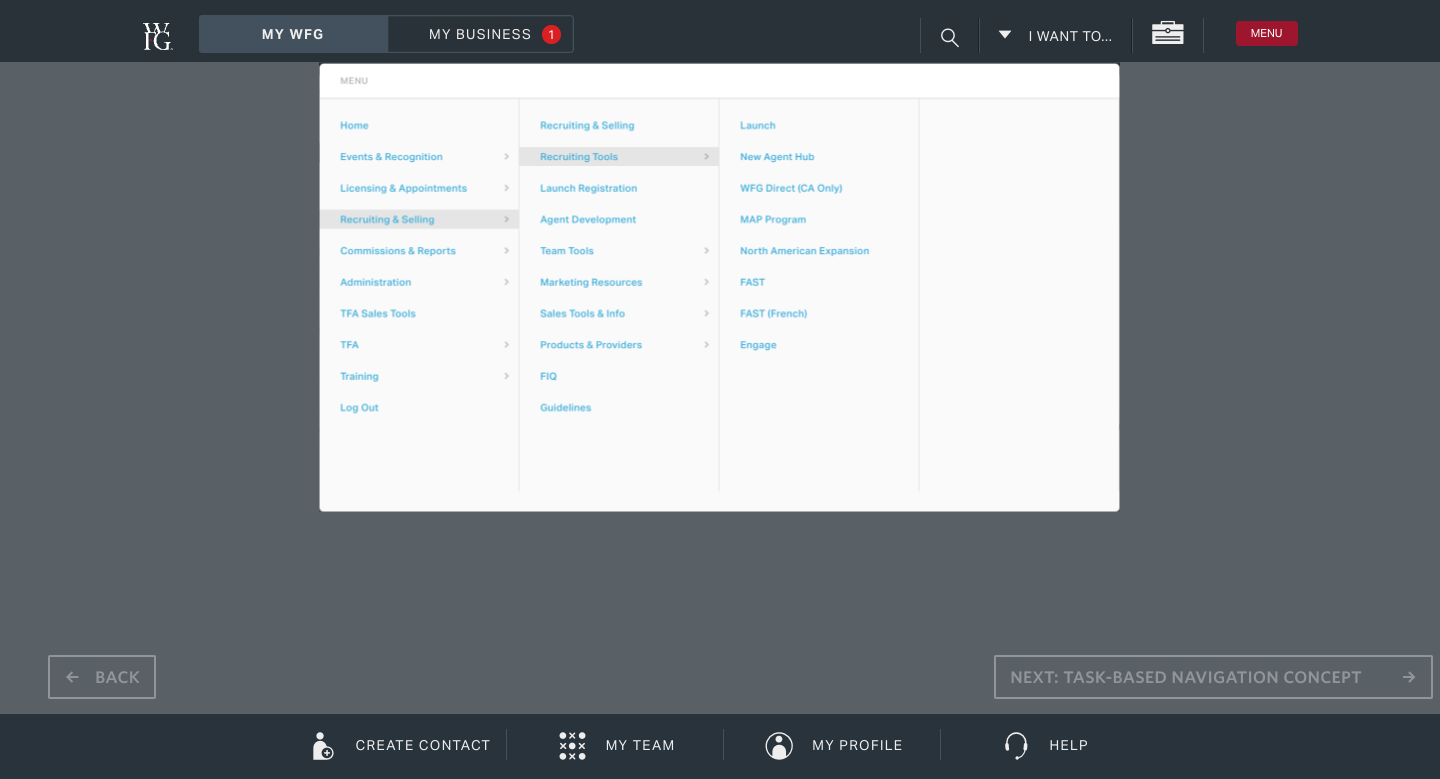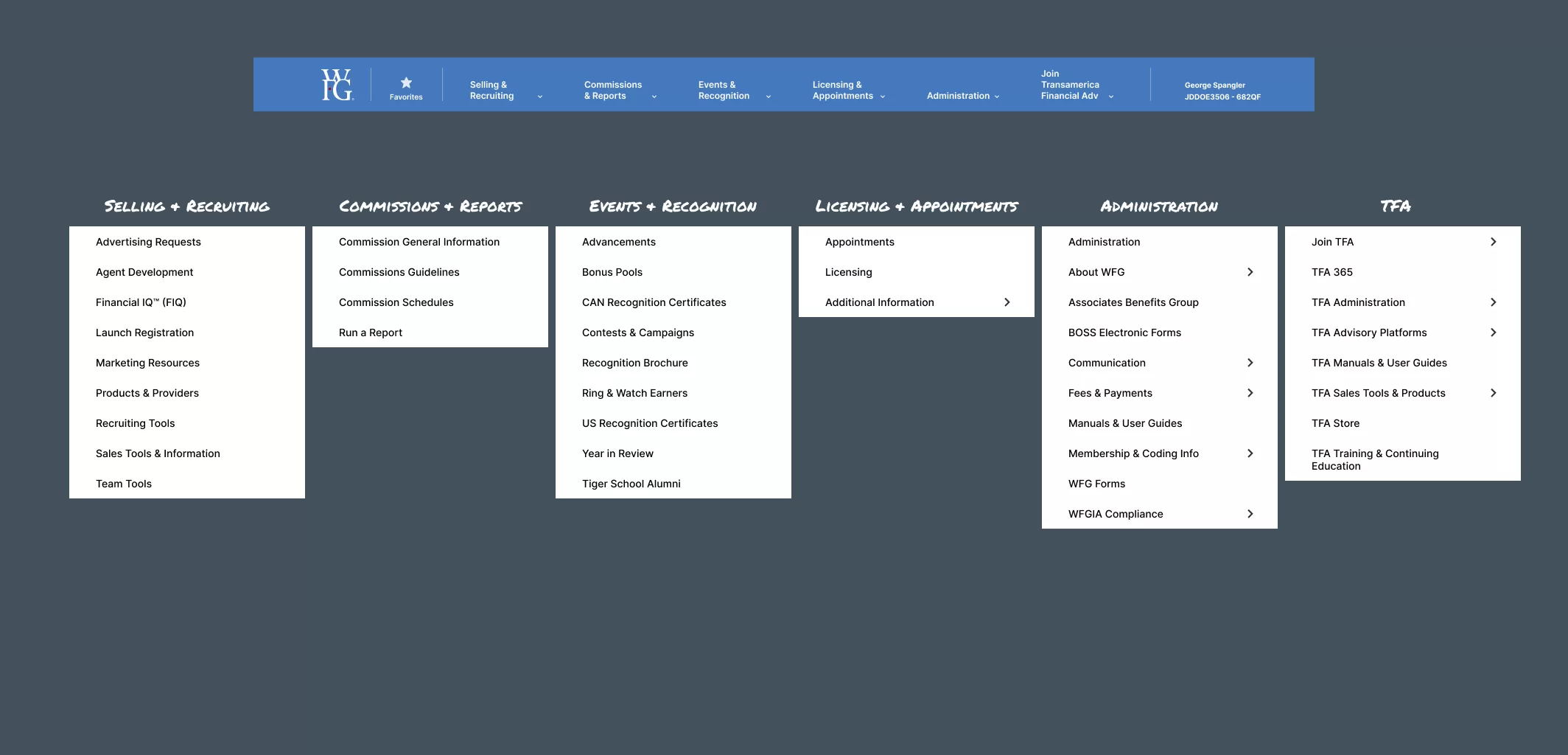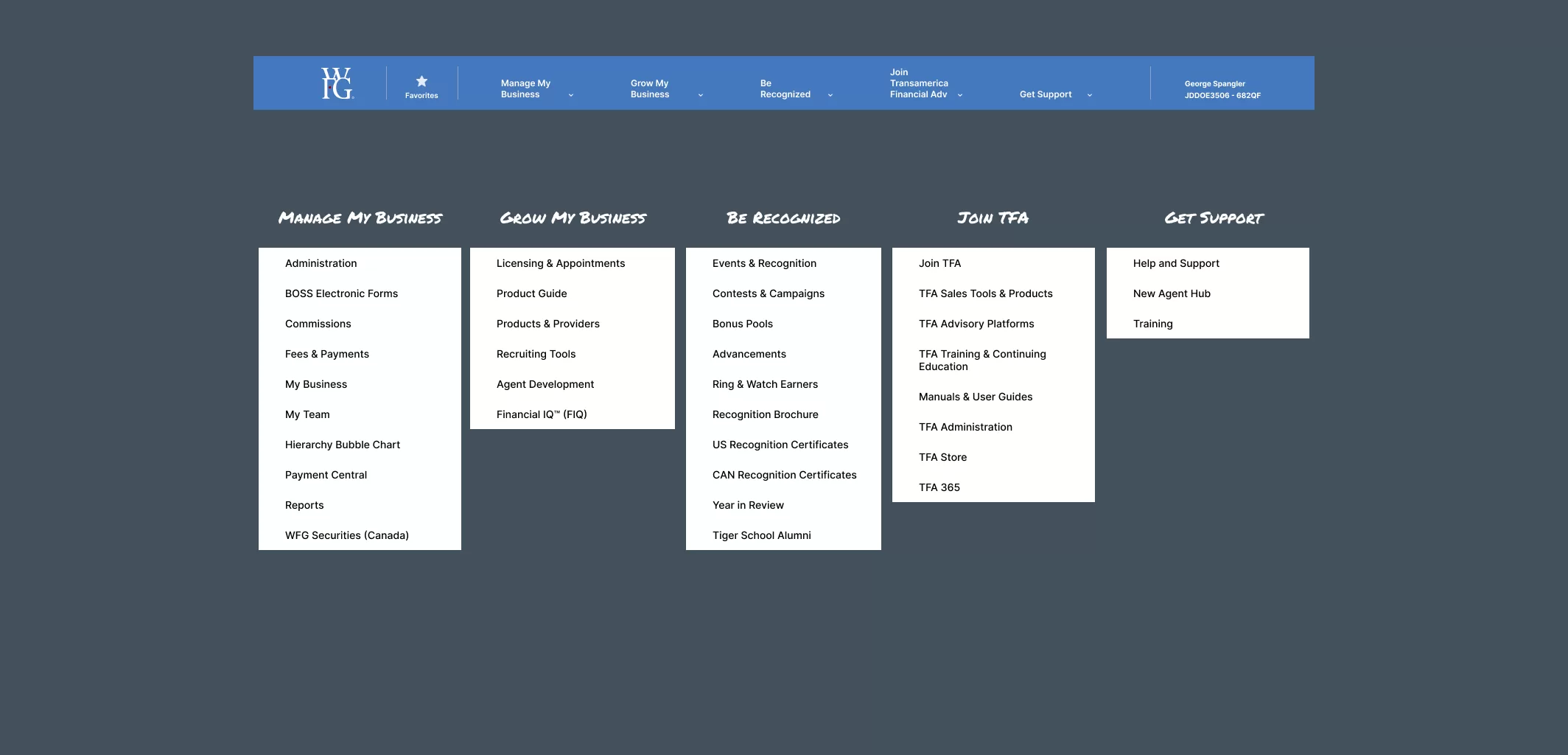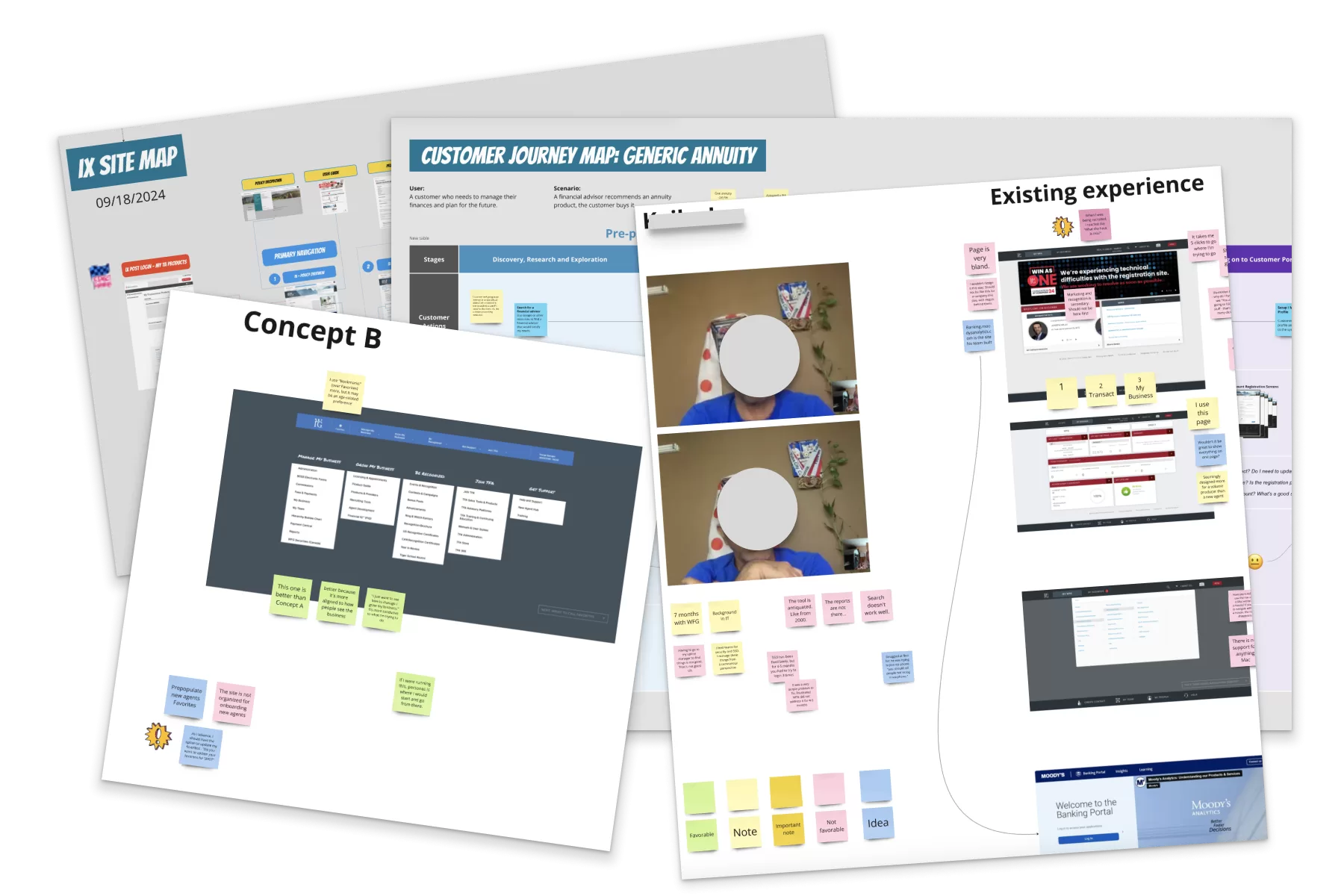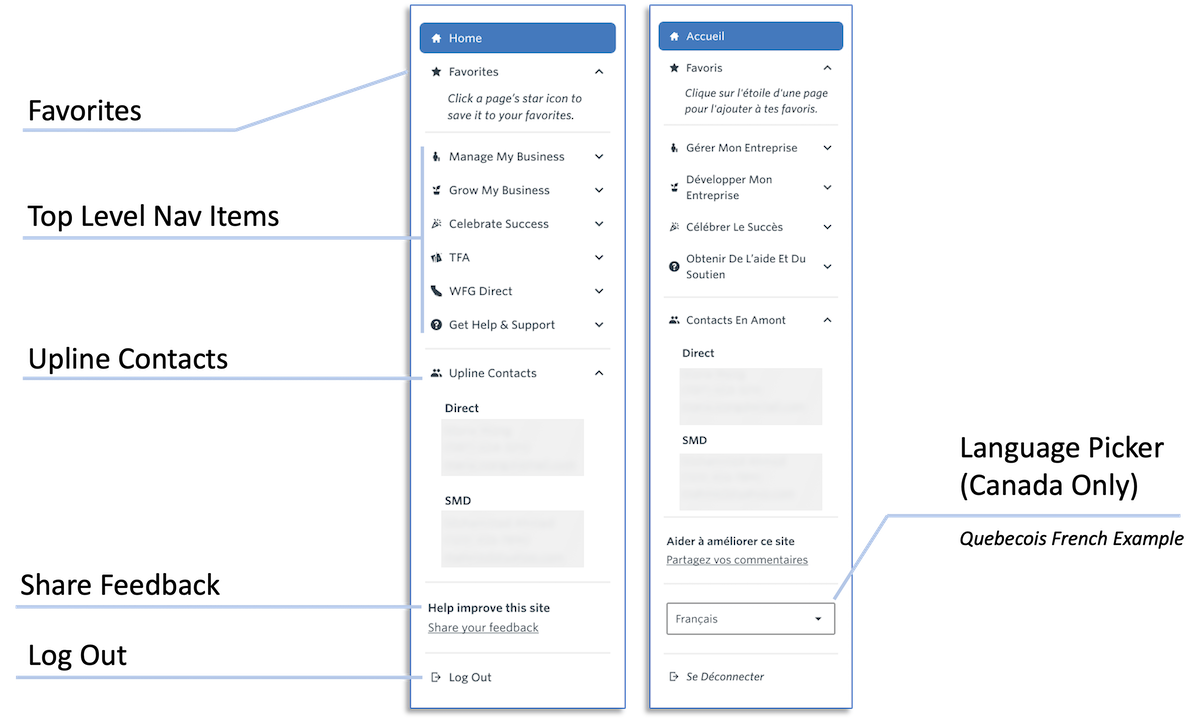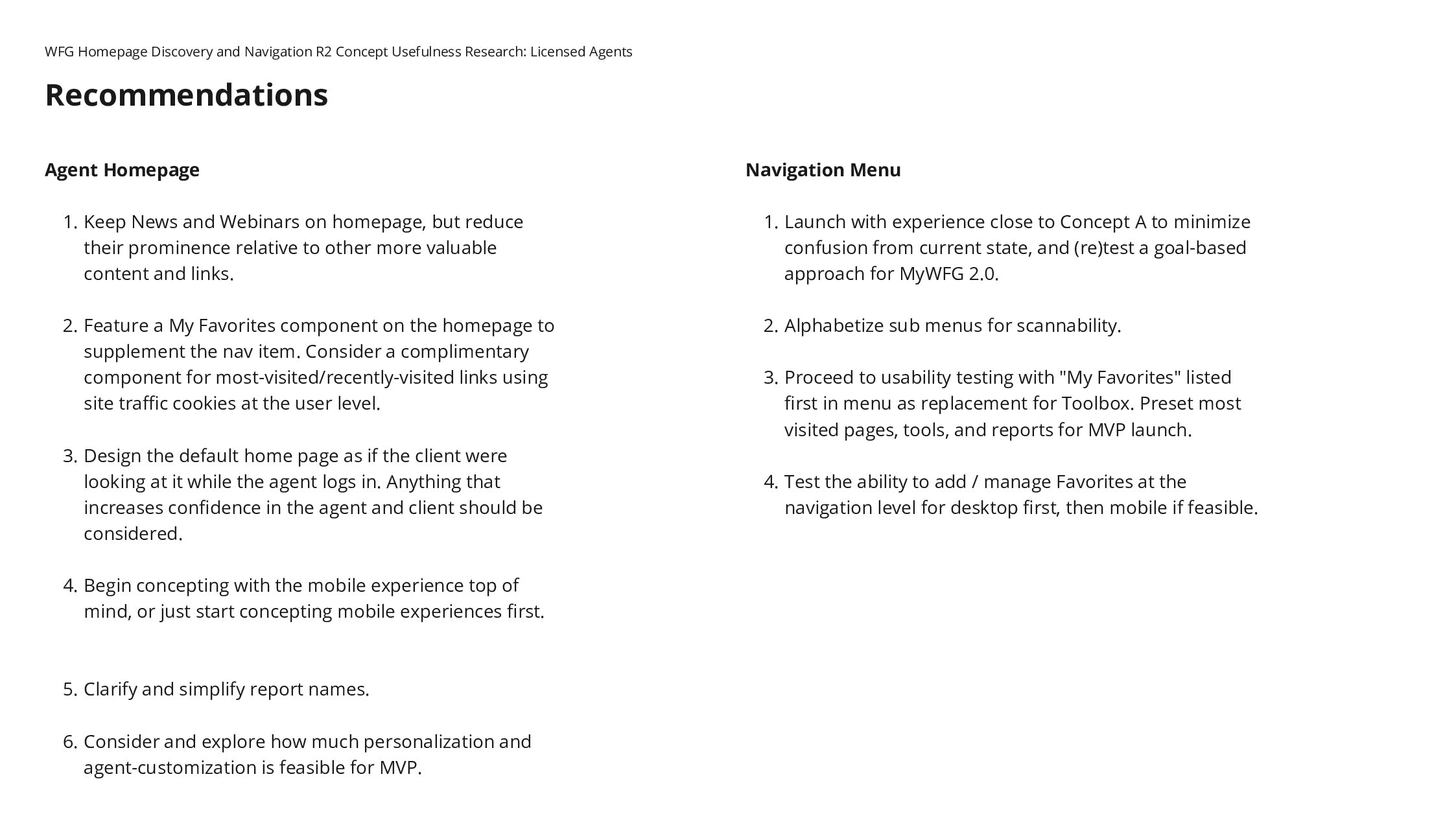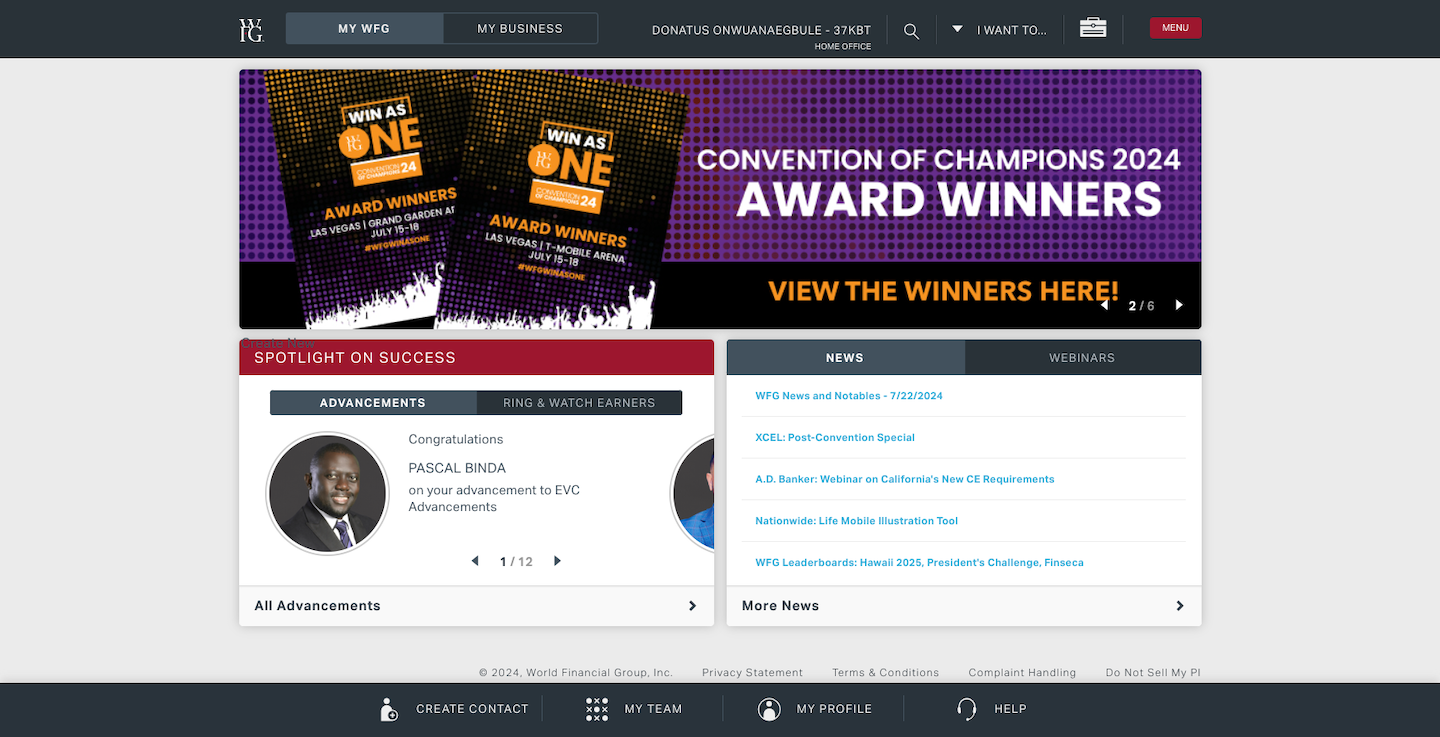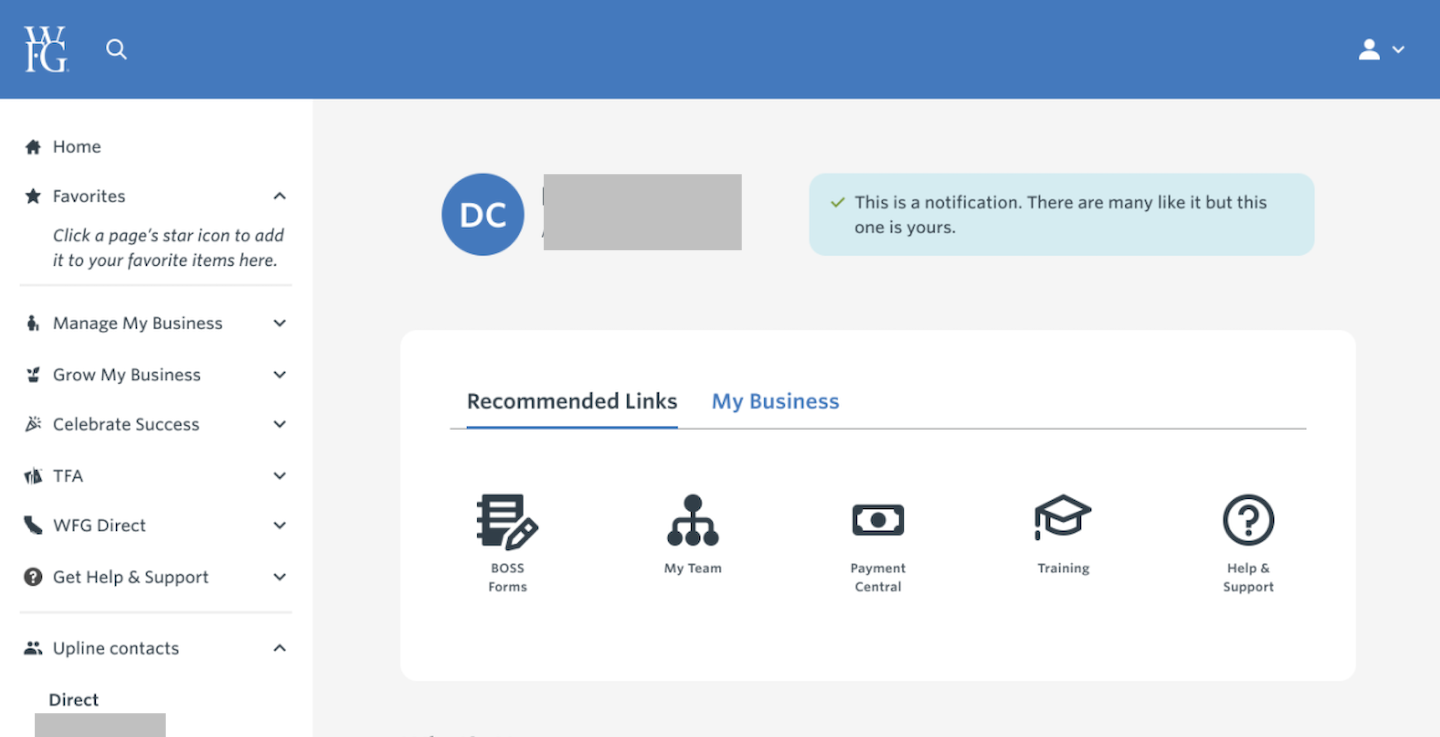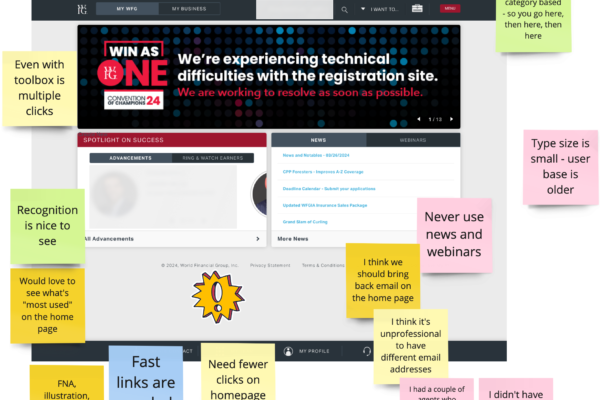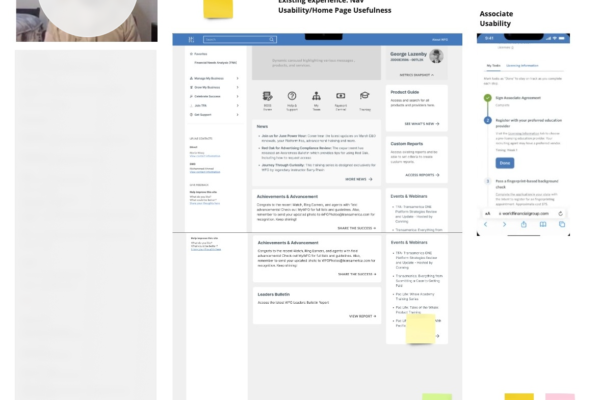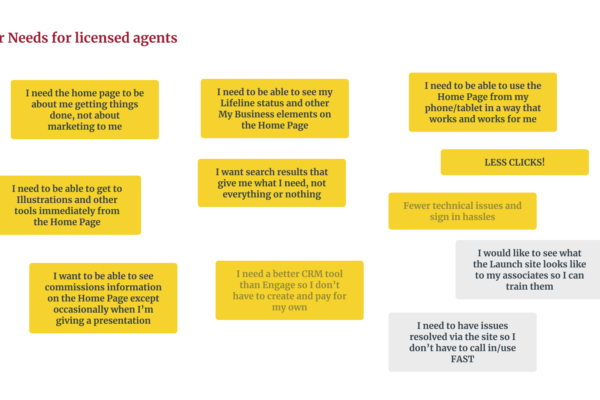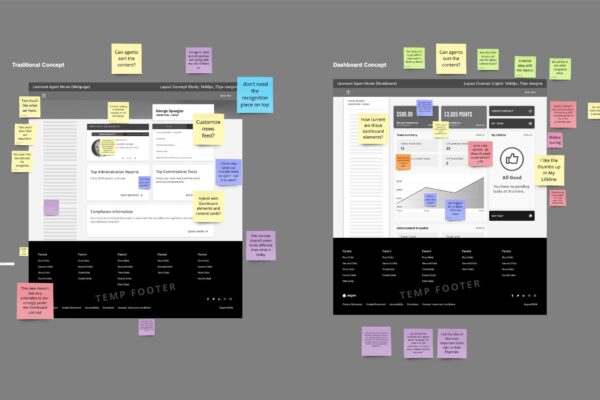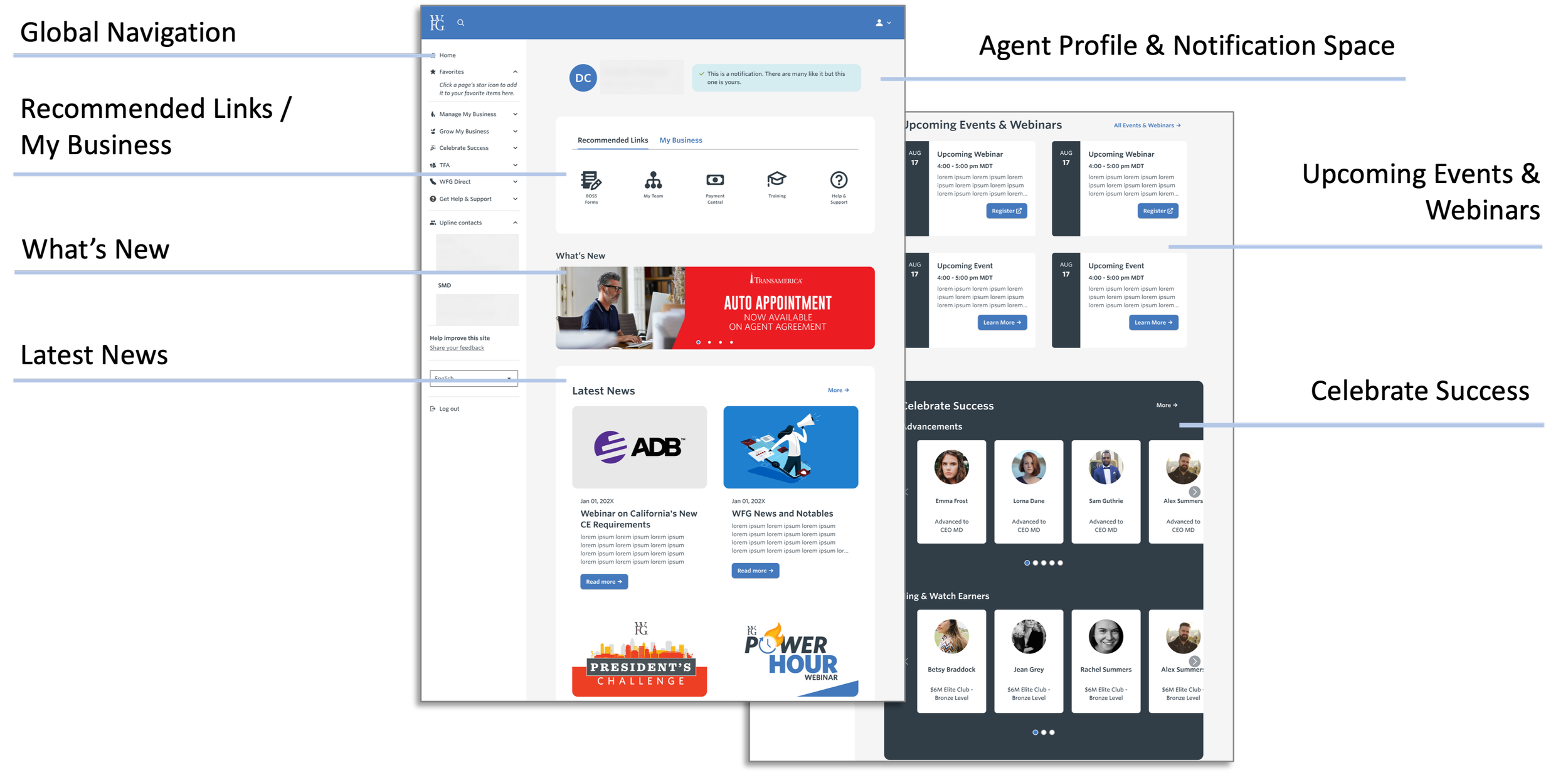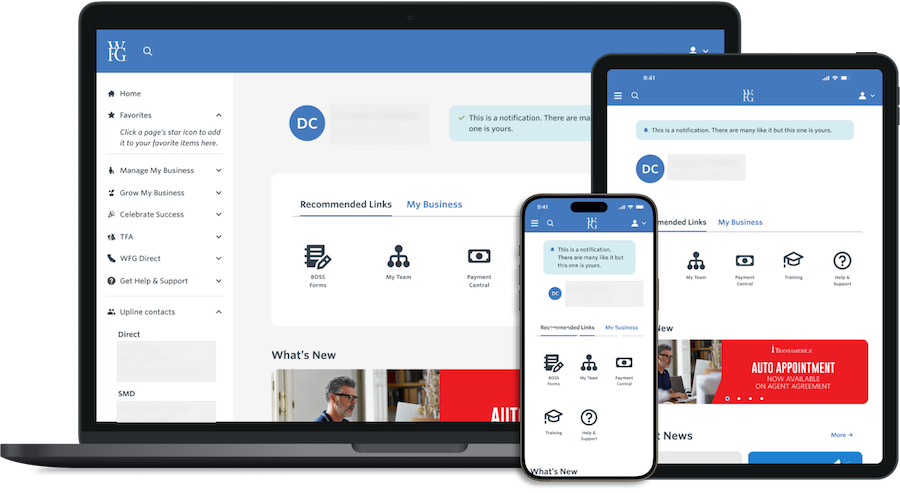Solution Oveview
The WFG Single Portal – Global Navigation Redesign project aimed to create a more efficient, user-friendly experience for licensed WFG agents. The redesigned global navigation system prioritized essential tools, simplified the menu structure, and optimized the experience for mobile devices. This streamlined approach allowed agents to quickly access the resources they need, increasing productivity and improving overall satisfaction.
Success Metrics
Although the project is still in progress and full metrics have not yet been realized, success is being guided by research-backed goals. From the outset, the team set measurable targets based on user needs and pain points identified through extensive research. These goals include:
- A notable increase in task completion rates as a result of simplifying the navigation system.
- Higher agent engagement driven by the reduced complexity and improved access to frequently-used tools.
- Improved agent satisfaction, particularly regarding the reduction in clicks needed to access key resources.
- Optimized mobile usage, with an emphasis on enhancing the experience for agents who rely on mobile devices for their daily tasks.
The Problem
Licensed WFG agents faced significant challenges with the existing portal’s global navigation. The navigation was cluttered, with too many links and subcategories, making it difficult for agents to quickly access the essential tools they needed. Mobile users, in particular, found the portal difficult to navigate, which hindered their productivity while on the go.
Problem Statement:
“Licensed WFG agents face difficulty accessing key tools quickly due to a cluttered and inefficient global navigation system, leading to reduced productivity and frustration, particularly on mobile devices.”
Key Decisions
Simplified Navigation
By eliminating unnecessary links and organizing tools based on frequency of use, the navigation was streamlined to reduce the number of clicks needed to complete tasks.
Mobile Optimization
Given the high usage of mobile devices by agents, a major focus was placed on ensuring the redesign would offer a seamless experience across both desktop and mobile platforms.
User-Centered Design
Through extensive research and feedback from agents, we defined clear goals that addressed their primary needs, including faster access to tools like Commissions and Client Management.
Process
The project began with user research, where we conducted interviews and surveys with WFG agents to identify their pain points and gather insights on how the current navigation was impacting their workflow. Based on these insights, we set research-backed goals and proceeded with design and prototyping, developing several design concepts focused on simplifying navigation and improving mobile accessibility.
Next, we conducted usability testing with agents to evaluate the prototypes. This iterative process allowed us to refine the designs based on real-world feedback, making adjustments to enhance both desktop and mobile usability. After finalizing the design, we moved into implementation, closely monitoring user feedback to refine the system further before full rollout.
Quotes from the Research
“I feel this is friendlier. This one would be easier to teach my recruits.”
“This one is better than Concept A...better because it's more aligned to how people see the business. I just want to see how to manage / grow my business. It's more conducive to what I'm trying to do.”
"I like the other one better. People will have negative reaction to change."
Learning Valuable Insights
Although full metrics are still pending, we’ve already learned valuable insights during the process. User feedback has been crucial in shaping the design, confirming the importance of simplifying the navigation and reducing unnecessary clicks. The mobile optimization proved to be a key success factor, as agents who rely on mobile devices reported significant improvements in their ability to access resources efficiently. One key learning was the need for change management—while many agents appreciated the improved functionality, some initial resistance to the new design was noted. However, as agents adapted, the overall response became increasingly positive.
Final Thoughts and Impact
As the project continues, the next steps include gathering additional feedback through full MVP testing and closely monitoring the success metrics as they begin to materialize. We’ll continue refining the navigation system based on ongoing feedback, with plans for a broader rollout once the effectiveness of the redesign is fully validated.
